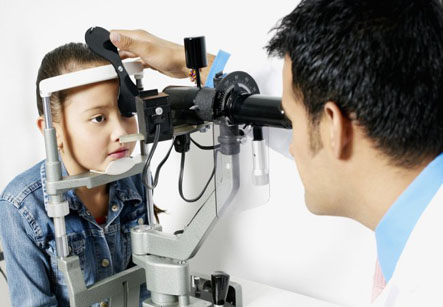Orthoptics
Introduction
Orthoptics is an ophthalmic field involving the evaluation and treatment of patients with disorders of the visual system with an emphasis on binocular vision and eye movements. Orthoptists are persons uniquely skilled in diagnostic techniques.
Orthoptics is a versatile field with opportunities and responsibilities in a variety of clinical settings. Orthoptists may serve the community in private ophthalmology practices. They can also work in hospital or medical university settings with involvement in patient care, as faculties and in clinical research. Orthoptists may even serve as directors or advisors to the state and local vision screening programs.
Orthoptists commonly work in pediatric ophthalmology settings. Orthoptists can serve patients of all ages, but because of the nature and incidence of many binocular disorders, the majority of patients are children. Management of adult patients in the field of Orthoptics is uniquely challenging and rewarding. These persons usually work for adult patients in settings of ophthalmology specific to neuro-ophthalmology and adult eye muscle disorders.
Iran is now ranking first both in the region and in the Middle East and the Iranian ophthalmology science is among the world top majors

Orthoptics is a specialized profession which is both intellectually challenging and rewarding. The focus of orthoptics is the evaluation and treatment of vision disorders, problems of eye movements and eye alignment in children and adults. Orthoptists work in ophthalmology – the branch of medicine devoted to the diagnosis and treatment of eye conditions and diseases.
Orthoptists work in ophthalmology – the branch of medicine devoted to the diagnosis and treatment of eye conditions and diseases.
Orthoptic Vision Therapy may be prescribed to patients with problems of visual related skills required for reading, eye strain, visually induced headaches, strabismus and diplopia. It is commonly practiced by optometrists and behavioral optometrists. However, the more specialized problems are usually managed by combined efforts of orthoptists and ophthalmologist.
Orthoptics aims to treat binocular vision disorders such as strabismus and diplopia. The emphasis is given on Eye Movement Control, Simultaneous Focus at Far, and Sustaining Focus at Far, Sustaining Focus at Near, Simultaneous Alignment at Far, Sustaining Alignment at Far, Simultaneous Alignment at Near, Central Vision (Visual Acuity) and Depth Awareness.
Some of the exercises used in this field are:
• Near point of convergence exercises,
• Base-out prism reading, stereogram cards, computerized training programs are used to improve fusional vergence.
• The wearing of convex lenses
• The wearing of concave lenses
• Antisuppression exercises – this is far less commonly practiced, although occasionally it may be used.
There is widespread acceptance of orthoptic therapy indications for:
• Convergence insufficiency- Patients who experience eyestrain, tiredness of eyes, or diplopia (double vision) while reading or performing other near work, and who have convergence insufficiency may benefit from orthoptic treatment. Patients whose outward drift occurs at distance rather than at near distance are less ideal candidates for treatment.
• Intermittent exotropia- This is often linked to convergence insufficiency.
Convergence insufficiency is a common binocular vision disorder characterized by asthenopia, eye fatigue and discomfort. Asthenopia may be aggravated by close work and is thought by some to contribute to reading inefficiency. Many studies have been done to determine efficacy of orthoptic vision therapy in the treatment of symptomatic convergence insufficiency. Both the studies demonstrated that in-office vision therapy was more effective than pencil pushups (this is a commonly prescribed home-based treatment) for improving the symptoms of asthenopia and the convergence ability of the eyes. Most recent studies suggested that home-based computer therapy combined with office based vision therapy is more effective than pencil pushups or home-based computerised therapy alone for the treatment of symptomatic convergence insufficiency.